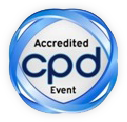
Raul N Ondarza-Vidaurreta
National Autonomous University of Mexico, Mexico
Title: Drug effects and drug targets from human pathogenic amoebas Entamoeba histolytica, Acanthamoeba polyphaga and Naegleria fowleri
Biography
Biography: Raul N Ondarza-Vidaurreta
Abstract
In our laboratory we have been working for several years searching and identifying thiol compounds such as Trypanothione in human pathogenic amoebas like E. histolytica, A. polyphaga and N. fowleri as well as on the inhibition of their enzyme NADPH-dependent Trypanothione reductase as a drug target, by neuroleptics, anti-mycotics, antibiotics and other drugs with antiproliferative effects. It is worth to be mentioned that E. histolytica, at least in 60 hours cultures, contains as much as four times more reduced cysteine than T(SH)2. Contrariwise, T. cruzi and Crithidia luciliae do not contain appreciable amounts of reduced cysteine. T. cruzi however, contains a much higher amount of T(SH)2 (559 nmol/g) than E. histolytica (29 nmol/g) when expressed by wet weight of the pellet, but the opposite is true when the amount is calculated in relation to the number of cells (T. cruzi=0.202 nmol/L×106 epimastigotes and E. histolytica=0.961 nmol/L×106 trophozoites). There is no doubt that the thiol compound trypanothione, which was previously thought to occur only in Kinetoplastida, is also present in these human pathogens, as well as in the non-pathogenic euglenozoan E. gracilis. The presence of the trypanothione/trypanothione reductase system in these amoebas creates the possibility of using this enzyme as a new "drug target" for rationally designed drugs to eliminate the parasite without affecting the human host.

